Preface The book is specially designed to investigate what skills and strategies are required in writing and speaking modules that distinguish the IELTS proficiency levels. There are a number of factors like Word Stress, Intonation, Rhythm and Cohesive Devices, which is required on behalf of the IELTS candidate in order to determine their assessment over four band scales: Fluency, Grammatical Range and Accuracy, Lexical Resource and Pronunciation. But how to attain all these skills is still a matter of discussion. Without understanding these technical aspects of English language, it is difficult for the IELTS candidate to score better in IELTS Speaking Test as this is the criteria for their oral proficiency. In non-native English country like India and China, no preference is given to learn all these skills. Only few study materials are provided to them to memorise the answers.
No preference is to be laid in building of Rhetoric among the candidate. The major objective of the book is:  Making the IELTS candidate proficient in speaking test by teaching them all the Rhetorical devices like Word Stress, Intonation, Rhythm, Cohesive Devices, Fluency, Lexical Resource, etc.
Making the IELTS candidate proficient in speaking test by teaching them all the Rhetorical devices like Word Stress, Intonation, Rhythm, Cohesive Devices, Fluency, Lexical Resource, etc.  All these techniques should be properly designed and provided to the students in the form of study materials.
All these techniques should be properly designed and provided to the students in the form of study materials.  Sound recorder (self-created by students in mobile phones) software should be used to maintain the Rate of Speech in the IELTS Speaking Task 2
Sound recorder (self-created by students in mobile phones) software should be used to maintain the Rate of Speech in the IELTS Speaking Task 2  Speech therapies should be given to the students to twist their tongues in L2. In 2001, the IELTS interview format and criteria were revised. A major change was the shift from a single global scale to a set of four analytical scales focussing on different aspects of oral proficiency.
Speech therapies should be given to the students to twist their tongues in L2. In 2001, the IELTS interview format and criteria were revised. A major change was the shift from a single global scale to a set of four analytical scales focussing on different aspects of oral proficiency.
This study is concerned with the validity of the analytical rating scales. It aims to verify the descriptors used to define the score points on the scales by providing empirical evidence for the criteria in terms of their overall focus, and their ability to distinguish the levels of performance. The Speaking Test Band descriptors and the criteria key indicators were analysed in order to identify the relevant analytic categories for each of the four band scales: fluency, grammatical range and accuracy, lexical resource and pronunciation. Speaking Skills Checklist is as follows: Production Skills, Pronunciation: Rhythm, Number & Length of Pauses, Stress, Intonation, Contours. Communication Skills: Fluency, Clarity, Coherence, Confidence, Cultural Appropriateness, etc. Language Skills: Grammatical Accuracy, Grammatical Range, Vocabulary But how an IELTS student will build these skills is still the matter of discussion. The IELTS Books/Instructors or even the organization of IELTS are silent in this matter.
No doubt, we can get this matter by netsurfing over different websites but what about the authenticity of the study material. The main problem in a non -native English country like India is that how students twist their tongues in L2 (English language) because while learning, they automatically get the influence of L1 (Mother Tongue) because it is their native language, and this is natural, so nobody can avoid it. But learning global (English) language with the help of Vocal Cosmetics/Rhetorical Devices will improve their tongue twisting into L2 (Second Language Acquisition) which automatically improve the proficiency of the candidate in the IELTS Speaking and Writing Test. Keeping this viewpoint in mind, I have decided to put forth some technical aspects of learning, writing and speaking English through the medium of this book.This will truly help the students to speak good and perfect English. ABSTRACT This chapter contains the Wfamily ofVocal Cosmetics, i.e., What is Vocal Cosmetics? Why is it necessary to know Vocal Cosmetics? How can you learn Vocal Cosmetics? What are its ingredients, etc. This whole chapter makes the students aware how the technical part of English is important along with its grammar part. Chapter 1 : W Family of Vocal Cosmetics 1.
What is Vocal Cosmetics? Vocal cosmetics is the technical product for improving your voice or pronunication to enhance the second language. 2. Why Do We Need Vocal Cosmetics for IELTS? The nine bands of Speaking Test depend only upon the ingredients of Vocal Cosmetics. This book will help you to know what are those factors that contribute a lot in building up of Speaking Bands. Speaking English is not just enough for scoring good bands in the Speaking Test, rather it requires candidate must be adept in the art of speaking English . No idea of the subject:- Generally, it has been seen that most of the candidates dont have matter to speak on the topics given by the instructor.
Solution in VOCAL COSMETICS :- This book helps the candidate to enhance the power of vocabulary with the tools of AWARENESS SESSIONS & LEXICAL RESOURCE. 2. Problem of VOICE FUMBLING :- Most of candidates face fumbleness in speaking the second language and many of them have their voice interrupted by their respective mother tongue as their mother tongue are their native languages.
Solution in VOCAL COSMETICS :- This book will help the candidate with the techniques of SPEECH THERAPY. 3. GRAMMATICAL ERRORS :- The common problem with every candidate is lack of grammatical skills which require proper understanding of tenses, content and functional words.
Solution in VOCAL COSMETICS :- This book will help in the building the structure of tenses with the help of the FINGERs GAME. 4. TECHNICAL ENGLISH :- Some important techniques are required to score the higher bands in the SPEAKING TEST like WORD STRESS, INTONATION, RHYTHM, SYLLABLE, COHERENCE Vocal cosmetics is the answer of all these techniques with illustrations. 3. What are the ingredients of Vocal Cosmetics? The main ingredients of Vocal Cometics are: 1. What are the ingredients of Vocal Cosmetics? The main ingredients of Vocal Cometics are: 1.
WORDSTRESS - 1BAND 2. INTONATION - 1 BAND 3. RHYTHM - 1 BAND 4. PAUSES - 1 BAND (PART OF SPEECH THERAPY) 5. FLUENCY - 1 BAND (PART OF SPEECH THERAPY) 6. COHERENCE - 1 BAND 7.
GRAMMAR ACCURACY - 1 BAND 8. SECOND LANGUAGE ACQUISITION (L2) - 1 BAND 9. LEXICAL RESOURCE (VOCABULARY USAGE) - 1 BAND 4. How can it be Implemented? With the help of Speech Therapy Techniques, it can be implemented. ABSTRACT This chapter provides the Wfamily of Interview Session. What is required for a goodinterview session with the instructor.
Along with this, it also teaches us the Dos andDon ts related to IELTS. Chapter 2 : Interview Skills Q 1. What is an Interview? Ans. A view of inner personality, virtues caliber and expertise on the behalf of an individual. 2. Know WH Family Who? What? Where? When? How? Why? 3. 4. 4.
Dos for an Interview Give Extended Responses
Give Extended Responses  Be Concise and to the point
Be Concise and to the point  Be Grammatically Correct
Be Grammatically Correct  Speak in Simple Small Sentences
Speak in Simple Small Sentences  Usage of Appropriate English Words
Usage of Appropriate English Words  Trouble-Shooting
Trouble-Shooting 
Next page
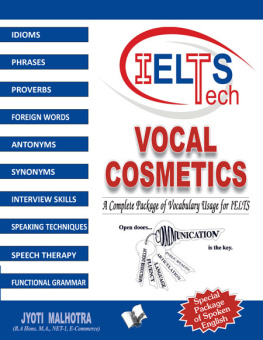
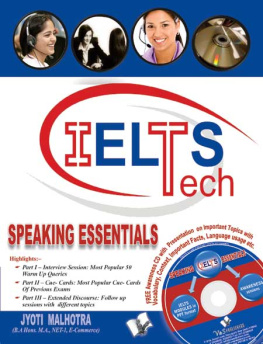
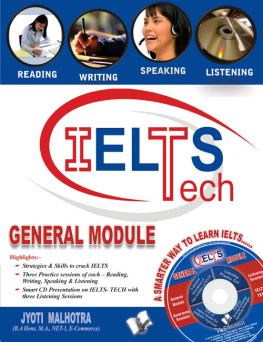
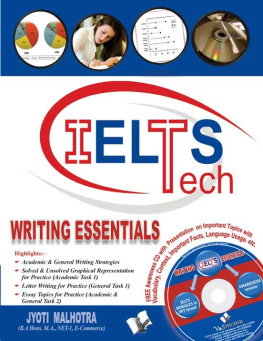
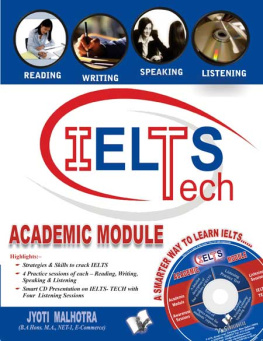
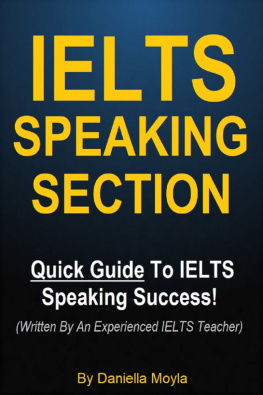
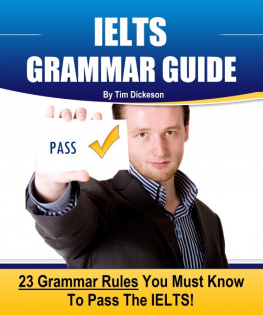
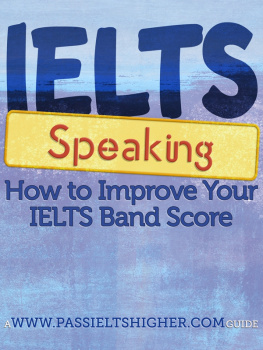

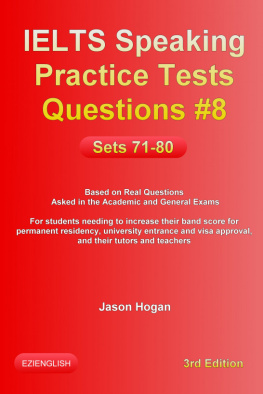

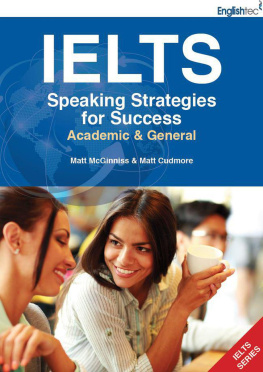
 Making the IELTS candidate proficient in speaking test by teaching them all the Rhetorical devices like Word Stress, Intonation, Rhythm, Cohesive Devices, Fluency, Lexical Resource, etc.
Making the IELTS candidate proficient in speaking test by teaching them all the Rhetorical devices like Word Stress, Intonation, Rhythm, Cohesive Devices, Fluency, Lexical Resource, etc.  Give Extended Responses
Give Extended Responses